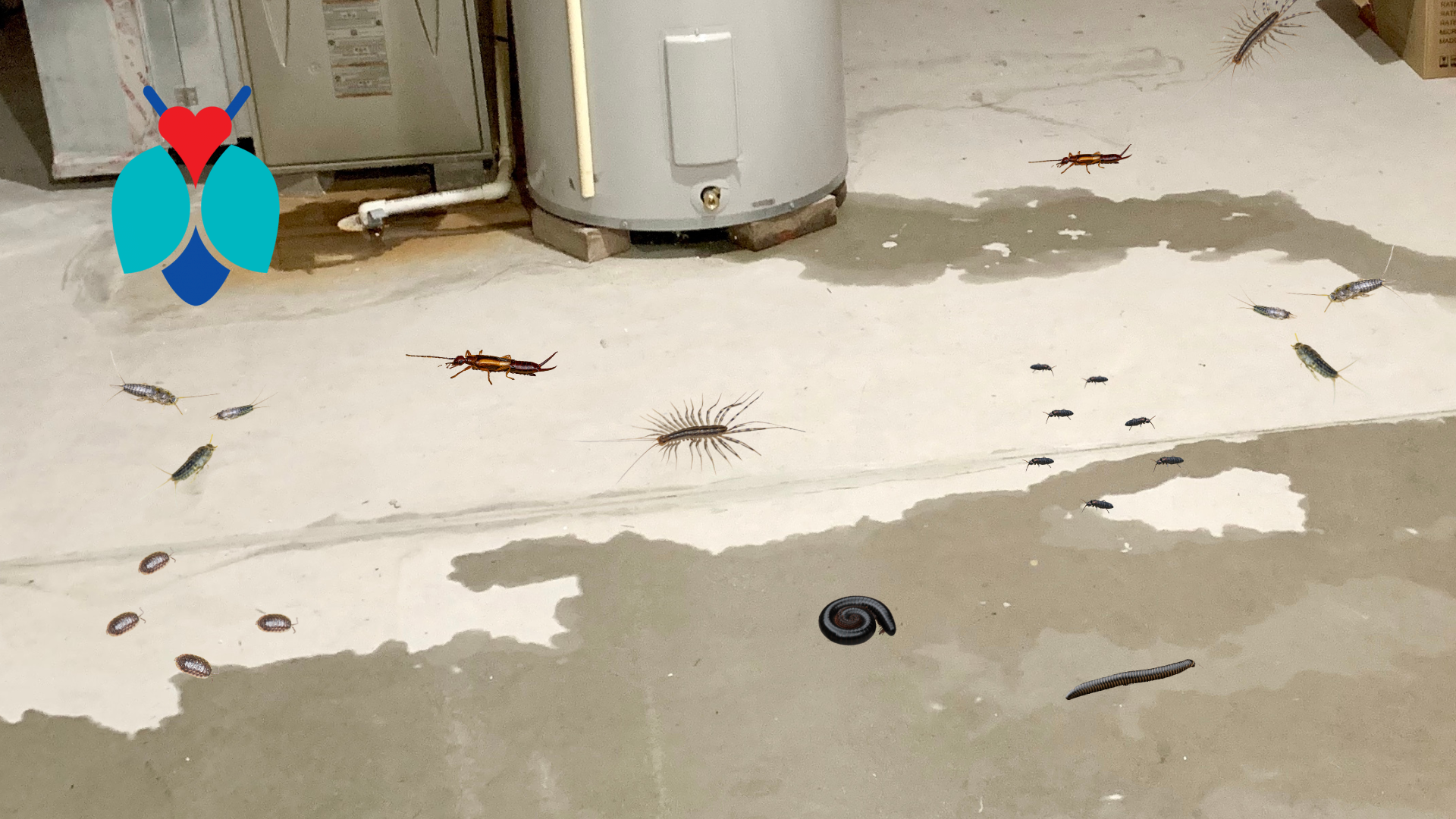In Minnesota, moisture pests become more prevalent in the Spring. The spring is often the wettest part of the year and all the groundwater and moisture flows into the basement attracting a variety of different insects.
No matter how scary some of these pests may look they all serve important roles in our ecosystem just not in our homes!
The Most Common Moisture Pests in Minnesota
To protect your home from all these insects and more our Insect Protection Plan or IPP is the most effective option
If you have any questions or concerns or would like to schedule an appointment call or send us an email
Call Us Today! 952-404-BOGO (2646)
Share This Page!
House Centipedes

Appearance
House Centipedes inflict the most fear in people out of almost any pest besides spiders and mice. Their bodies are flat with 3 dark stripes along their back. The color of their bodies varies between brown and gray with hints of yellow. Their 15 long striped legs are what help them give their unsettling image.
Length: >1.0 inches
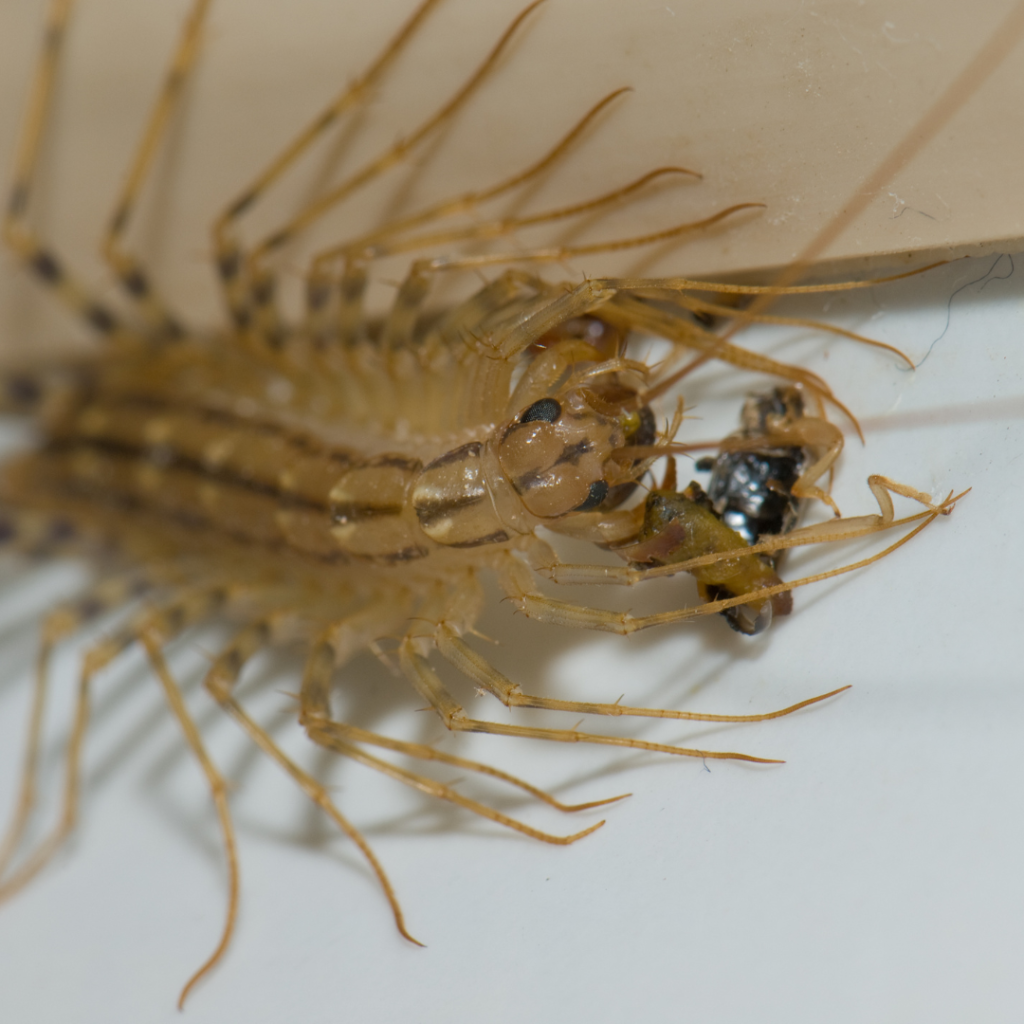
Behavior
No matter how nasty house centipedes look, just like any insect, they all play an important role in our ecosystem. Their purpose is to be the top predator of the insect world. They feed on a variety of insects including; ants, larvae, spiders, bedbugs, cockroaches, beetles, and any other small insect. They use the venom inside their claws to paralyze their prey before eating them. They’re most likely to be found inside homes with other insect activity. Their also drawn to water and moisture because they are prone to dehydration. Luckily for humans, their claws and fangs are not strong enough to penetrate through human skin. They also do not carry diseases, build webs, or cause structural damage to the home.
Lifespan: 3-5 years (with water source)
To learn more about house centipedes in Minnesota
Millipedes
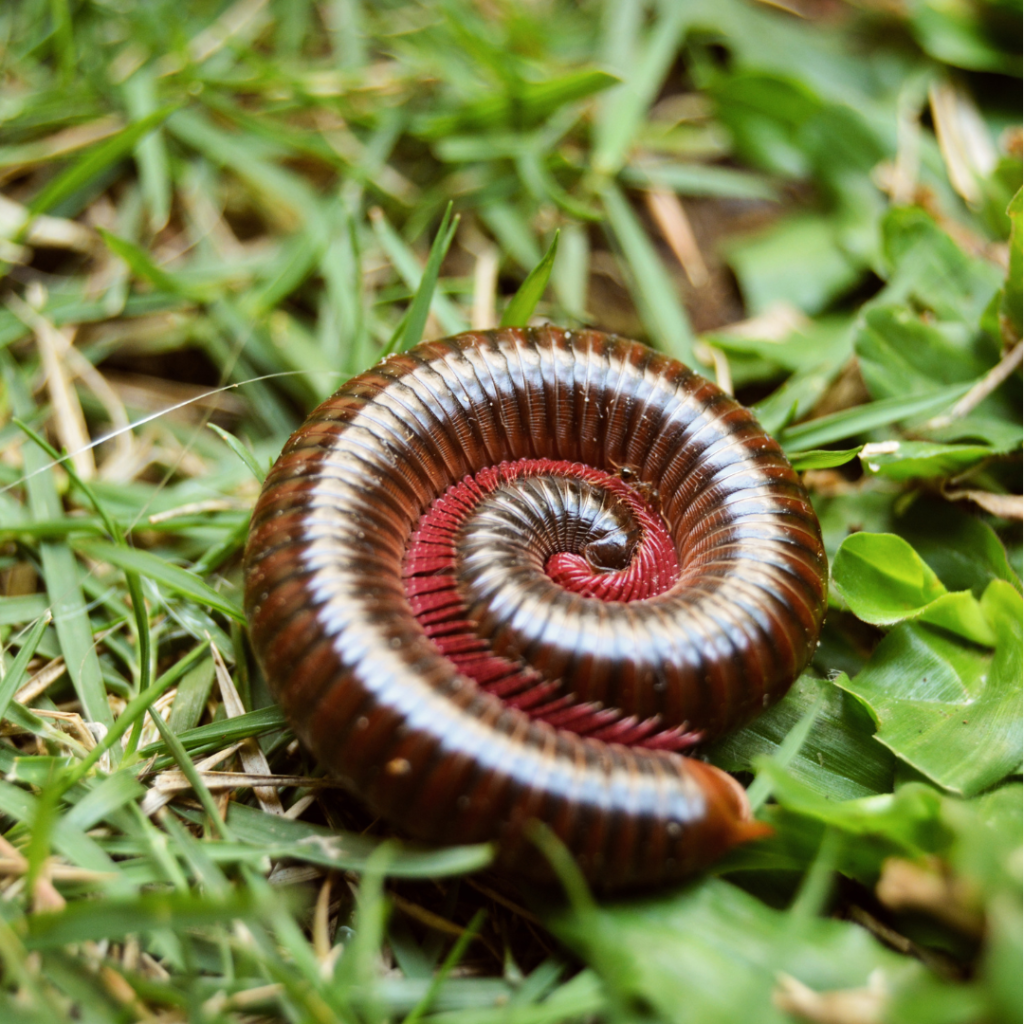
Appearance
Millipedes do not have a million legs. But they still have a lot! They can have up to 400 legs. Their bodies are usually black or brown and their bodies curl up when they feel threatened or die.
Length: 1-1.5 inches
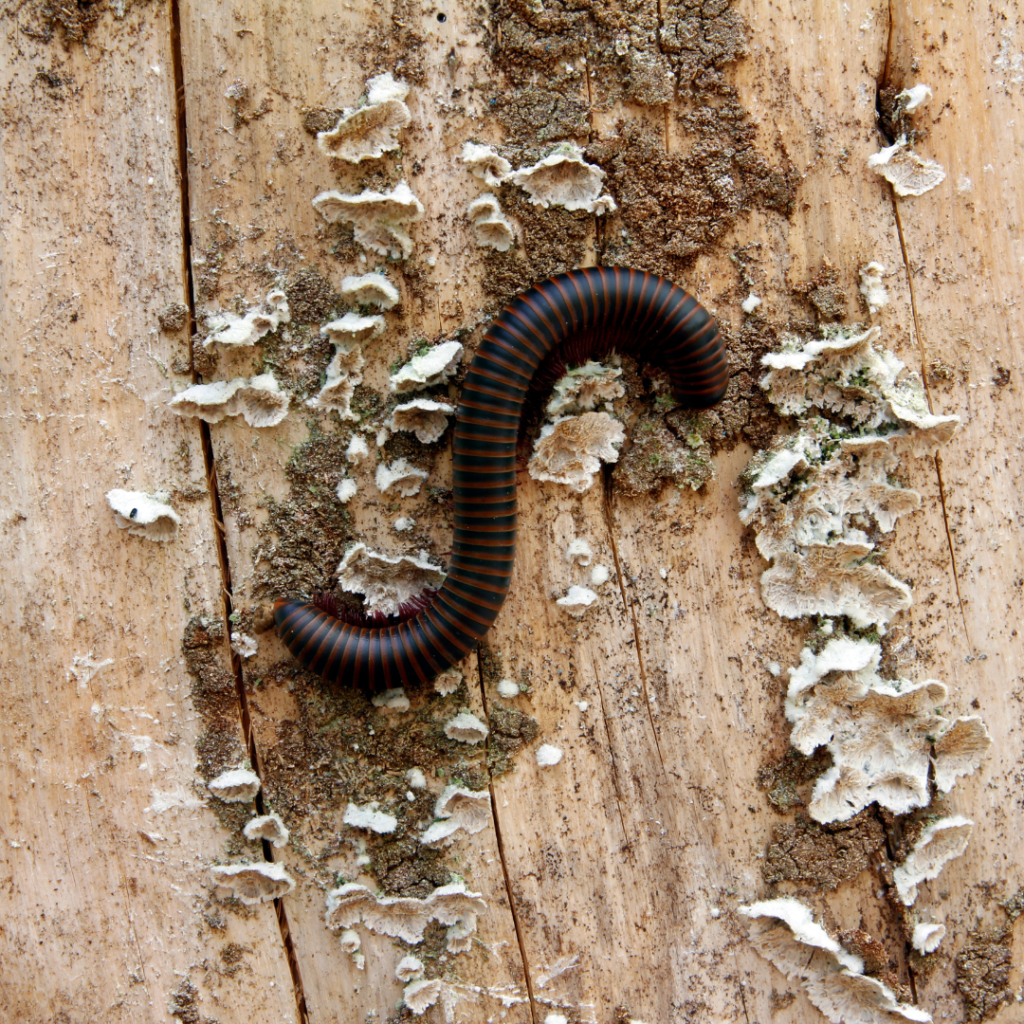
Behavior
Millipedes live in gardens, underneath leaf litter, potted plants, rocks, and damp soil. They play an important role in breaking down organic matter and fungi. In other words, they are living composters! They are the most active at night. In the summer when it becomes hot and dry outside millipedes become motivated to search for moisture and cooler temperatures inside homes. They can also be found inside homes after rain storms or when there is excess groundwater. In Minnesota, this happens in the spring when all the snow starts to melt.
Lifespan (inside): 2-4 weeks
To learn more about millipedes
Springtails

Appearance
Springtails vary between black, grey, and sometimes white. They are commonly misidentified as fruit flies or fleas. They do not have wings so they can’t fly like fruit flies. Their body structure is different than fleas. Fleas are much more difficult to crush because their bodies are flatter than a springtail.
Length: 1/16th-1/18th inches long

Behavior
Springtails can be a difficult pest to control due to their tiny size. During hot dry summer days, they become highly motivated to search for moisture inside homes and other structures. This usually causes them to congregate around bathrooms, basements, kitchens, and plumbing leaks. Reducing the moisture inside the home is the most effective way to keep them out of the home. When they live outdoors they play an important role in feeding on fungi, algae, and decaying organic matter. They are most abundantly found living inside mulch, gardens, and forest floors.
Lifespan: 0-1 year
To learn more about springtails
Sowbugs
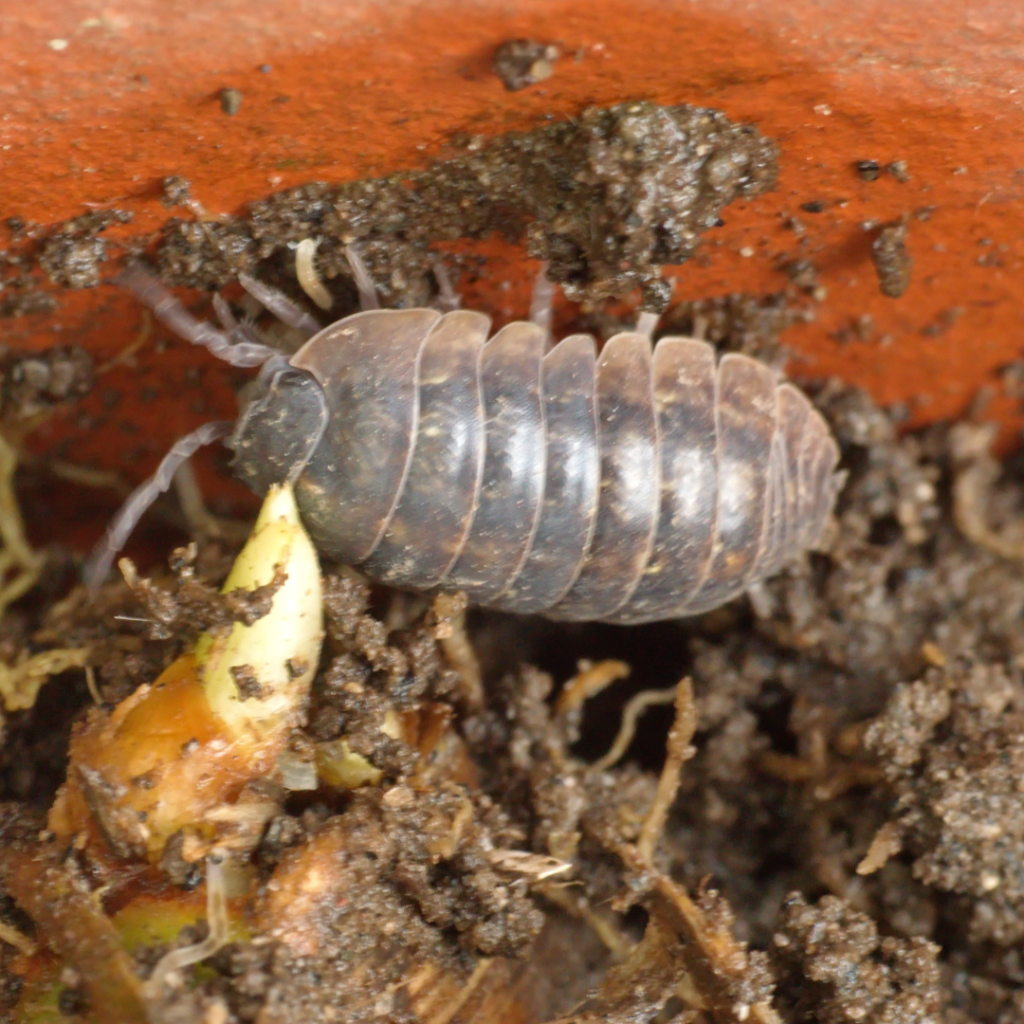
Appearance
Sowbugs are prehistoric insects that can be found on every continent. They have been on our planet for millions of years! They are isopods or crustaceans which means they are related to lobsters, crayfish, and crabs. Their bodies have 14 legs and brownish-gray shells.
Length: 0.75 inches

Behavior
These bugs’ main role in the ecosystem is to break down decaying organic matter. Their lives depend on feeding on leaf litter, fungi, rotting wood, compost, and dead animals. They are often seen inside basements with excess moisture or homes with not properly designed runoff. They do not survive long once inside as there is no food for them.
Lifespan: 1 year
Learn more about sowbugs
Silverfish

Appearance
Silverfish get their name from the silvery metallic scales on their bodies. They also have 3 long tail-like appendages that are often the length of their bodies.
Length: <0.5 inches
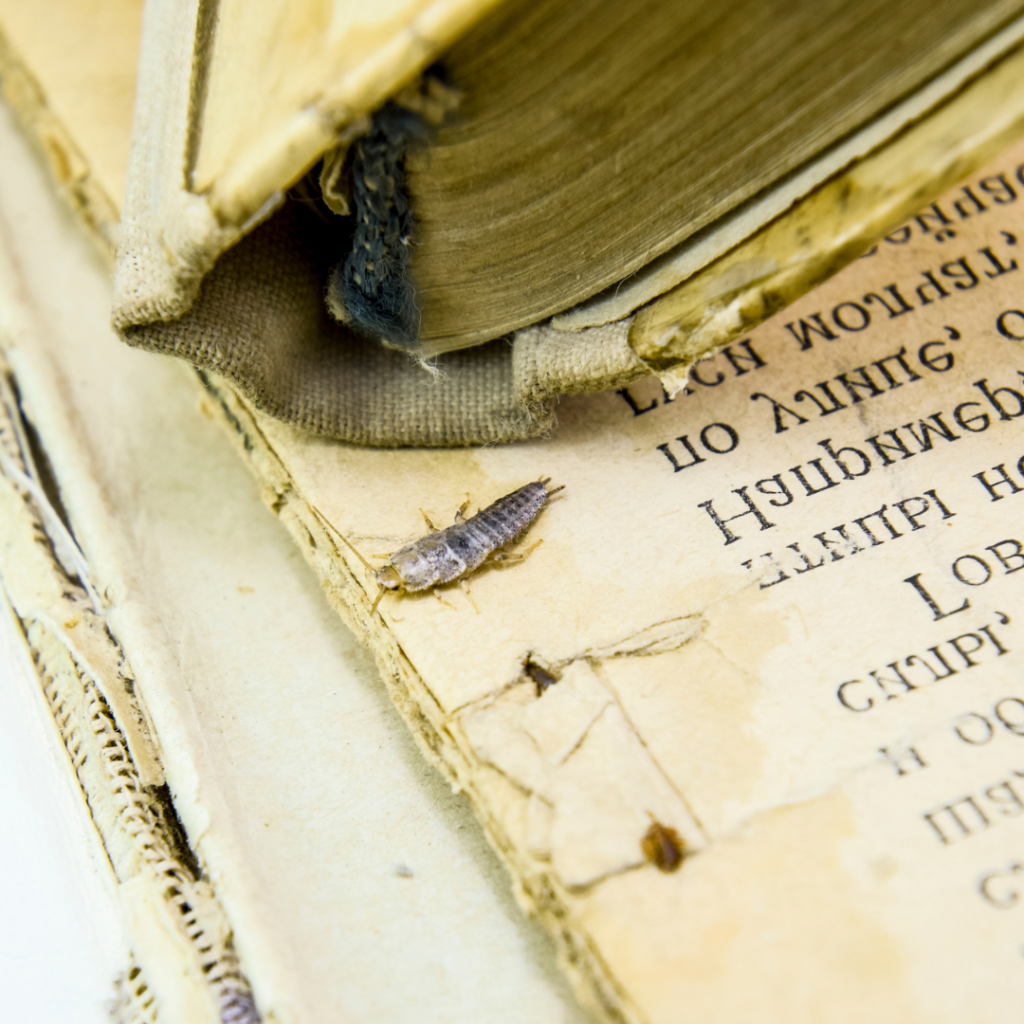
Behavior
Silverfish can be found living inside cereal boxes, books, wallpaper, and any other starchy items. As they chew and feed on these products they can oftentimes leave irregularly shaped holes damaging whatever they are infesting. In the wild, they live under leaf litter, rocks tree stumps, and logs. Due to their desire for protein and starch-rich foods, they play an integral part in breaking down dead organisms and acting as decomposers.
Lifespan: 2-3 years
Learn more about silverfish
Earwigs

Appearance
Earwigs have a unique appearance with their very distinguishable pincers. The pincers are located at the tip of the abdomen. Their bodies are reddish brown and they have small wings on their thorax. To tell a female and male earwig apart female pincers are closer together and straighter while the male pincers are curved and more separated.
Length: 0.6 inches
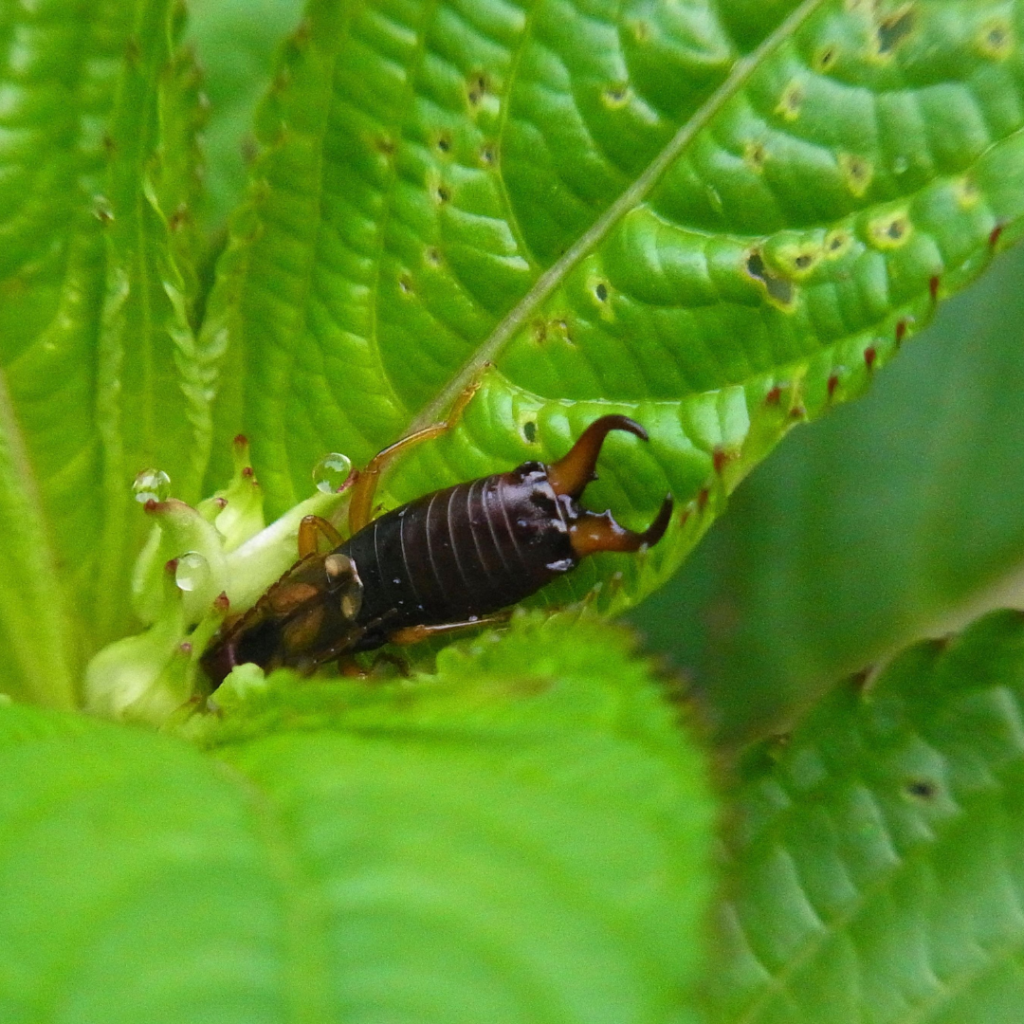
Behavior
Earwigs prefer to live in dark areas with excess moisture. Some common areas to find them outside would be; under potted plants, doormats, gardens, leaves, and cracks in sidewalks and driveways. They get their main food source from decaying organic matter. But on occasion, they will also feed on live plants (see image above). Their damage looks like small circular holes in the leaves. They can hurt plants but they are harmless to humans. Once inside a home, they do not reproduce or cause structural damage.
To learn more about earwigs
To protect your home from all these insects and more our Insect Protection Plan or IPP is the most effective option



